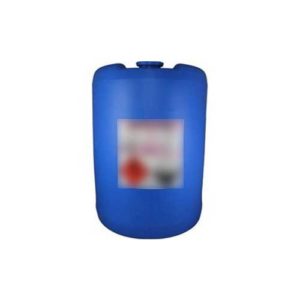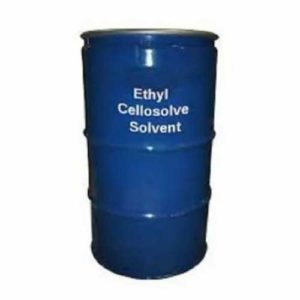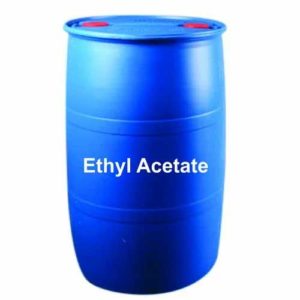DIETHYLENE GLYCOL (DEG) – C4H10O3
ABOUT:
The process of manufacturing DEG involves the following steps:
- Ethylene oxide is synthesized by the reaction of ethylene and oxygen over a silver catalyst. The reaction is performed at high temperature and pressure in the presence of a solvent.
- Ethylene oxide is then hydrogenated to form ethylene glycol, which is the first step in the manufacture of DEG.
- Ethylene glycol is then hydrated to form DEG by the addition of water. This reaction is typically performed in the presence of an acid catalyst.
- The DEG produced from the hydration reaction is then purified by distillation to remove impurities. The purified DEG is then ready for use as a raw material for the production of a wide range of products, including polyester resins, solvents, and antifreeze solutions
PHYSICAL PROPERTIES:
Appearance: Colorless, clear liquid
Odor: Odorless
Taste: Sweet
Molecular weight: 106.12 g/mol
Boiling point: 245 °C (473 °F)
Melting point: -12.3 °C (9.9 °F)
Density: 1.111 g/cm3 (20 °C)
Viscosity: 1.63 mPa·s (20 °C)
Refractive index: 1.4436 (20 °C)
Flash point: 96 °C (204.8 °F)
CHEMICAL PROPERTIES:
- Diethylene glycol is soluble in water and most organic solvents.
- Diethylene glycol is a stable and non-reactive chemical under normal conditions.
- It has a neutral pH value of 7.
- Diethylene glycol has a low hygroscopicity, meaning it does not readily absorb moisture from the air.
- Diethylene glycol is toxic if ingested or inhaled in large amounts and can cause harm to the kidneys, lungs, and central nervous system. It is important to handle diethylene glycol with proper protective equipment and in accordance with local health and safety regulations.
APPLICATIONS:
AGROCHEMICAL INDUSTRY:
- DEG is used as a solvent and cosolvent in the agrochemical industry to dissolve active ingredients and as a diluent to adjust the viscosity and application properties of pesticide formulations. It can also be used to increase the stability and shelf life of agricultural chemicals.
- DEG is also used as an antifreeze in agricultural spray solutions to keep spray nozzles from freezing and clogging during application. DEG can also be used as a humectant, which aids in controlling the moisture content of agrochemical formulations to maintain efficacy.
CEMENT MANUFACTURING:
- Diethylene glycol can be used as a lubricant in cement manufacturing. During the grinding process, cement particles can adhere to each other and form clumps, making it difficult to achieve a fine, uniform powder.
- DEG is used in small amounts, typically at a concentration of 0.1 to 0.5% by weight. The DEG acts as a grinding aid, reducing the friction between the grinding media and the cement particles, and thus reducing energy consumption during the grinding process.
COSMETICS AND PERSONAL CARE PRODUCTS:
- Diethylene glycol is used in cosmetics and personal care products as a humectant, solvent, and viscosity-decreasing agent.
NATURAL GAS INDUSTRY:
- In the natural gas industry, diethylene glycol (DEG) is commonly used as a dehydrating agent to remove water vapour from the gas stream. To prevent the formation of hydrates, which can block pipelines, reduce the heating value of the gas, and cause corrosion in equipment, natural gas must be dehydrated.
- DEG is also used as an antifreeze in the natural gas industry to prevent freezing of equipment and pipelines.
OIL INDUSTRY:
- Diethylene glycol (DEG) is a commonly used chemical in the oil industry as a solvent.
- It is also used as an additive in drilling mud to help reduce the viscosity of the mud and improve its ability to lubricate the drill bit. In oil refining, DEG is used as a solvent for grease, waxes, and other impurities, and it is also used as a raw material in the production of lubricants and other specialized chemicals.
PAINTS AND COATING INDUSTRY:
- DEG is favored as a solvent due to its low volatility, low toxicity, and its ability to dissolve a wide range of substances, including resins, pigments, and other additives used in paint and coating formulations.
- In paint and coating applications, DEG acts as a wetting agent to improve the flow and leveling properties of the coating, as well as a viscosity reducer to make the paint easier to apply.
PRINTING AND INKS INDUSTRY:
- Diethylene glycol (DEG) is a common solvent used in the production of printing inks and toners.
- This allows for a more uniform and consistent application of the ink on a variety of substrates, such as paper, plastic, and metal.
TEXTILE INDUSTRY:
- DEG is used as a solvent for printing pastes and dyes, and it helps to increase the color fastness and improve the washability of the fabric.
- DEG is used in the production of some synthetic fibers, such as polyester and nylon, to improve the stability and processability of the fibers during spinning and drawing.
TOBACCO INDUSTRY:
- Some tobacco products, such as cigarettes and smokeless tobacco, contain diethylene glycol (DEG) as a flavour enhancer. The chemical is added to the tobacco mixture to provide a sweet flavour and to help mask the bitter flavour of the tobacco.
- DEG is a solvent that can dissolve and evenly distribute flavours throughout the tobacco mixture, resulting in a more consistent flavour.
SAFETY MEASURES:
- When handling DEG, it’s important to wear protective clothing, such as gloves and eye protection, to minimize the risk of skin and eye irritation.
- DEG can be toxic if inhaled, so it’s important to work in a well-ventilated area and to avoid breathing in fumes or vapors.
- DEG should be stored in a cool, dry place, away from heat sources and ignition sources. The container should be labeled clearly to indicate the contents and to provide handling instructions.
- DEG should be disposed of properly, in accordance with local regulations. This may include neutralizing the chemical and disposing of it as a hazardous waste.
- If you’re using DEG-based products, such as inks or flavorings, it’s important to follow the manufacturer’s instructions for safe use and handling.
- If you suspect you have been exposed to DEG, seek medical attention immediately. Symptoms of exposure can include nausea, vomiting, abdominal pain, and difficulty breathing.







Reviews
There are no reviews yet.